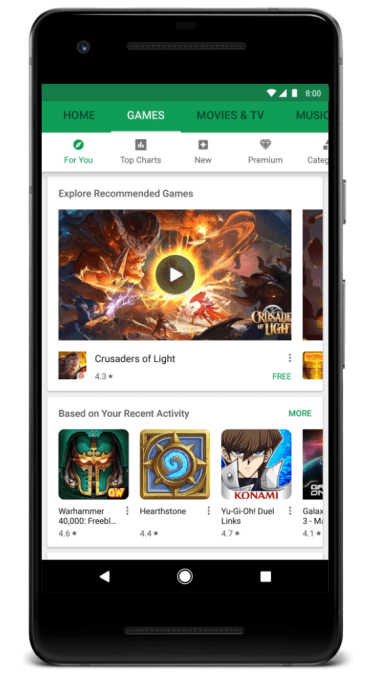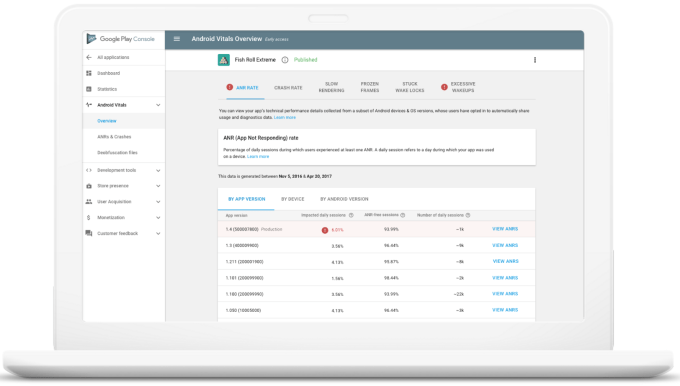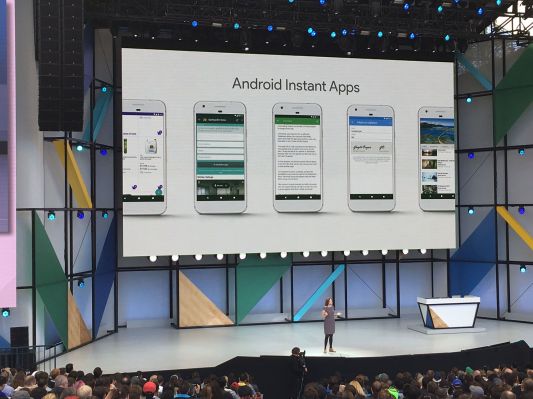Google today is announcing a number of changes to its Google Play app store, the most notable being a new way to try apps immediately without having to first install them on your mobile device. The new feature takes advantage of “Android Instant Apps” technology – Google’s attempt at bridging the mobile web world with that of native applications.
Instant Apps were first introduced at Google’s I/O developer conference last year. Unlike native apps that have to be downloaded in full, Instant Apps launch with just a tap on a URL. To support this, developers partition their apps into small, runnable parts, so they can start within seconds. The technology had only been available to select developers until their general release this May, announced at Google I/O 2017.
Today, Instant Apps are becoming a part of the Play Store, Google says. Via a new “Try it Now” button, users can start using an app without installing it.
There’s a small collection of Instant Apps available now, including those from BuzzFeed, NYTimes (Crossword), Hollar, Red Bull, Skyscanner, and others.
The feature is one of several improvements to the Play Store that Google is touting today.
Its revamped Editor’s Choice section is now live in 17 countries, for starters.
It launched a new home for Games featuring trailers and screenshots of gameplay. This section will introduce new sections soon – one for paid games (“Premium”) and another for upcoming and trending games (“New.”)

It’s also expanding its “live operations” banners and cards which alert users to in-game events on those games they already have installed. The feature is meant to help re-engage users beyond the initial install.
The company pointed to its other recommended app collections, too.
This includes the recently expanded group of “Android Excellence”-awarded apps – those Google believes have a strong focus on design, user experience and performance – and its Indie Games Festival winners. (The San Francisco competition just wrapped, and Google has opened nominations for its European counterpart.)
This focus on editorial suggestions is not unique to Google. Apple’s new App Store is also heavily editorially-driven, with longer features, write-ups, interviews, lists, and more, in addition to recommendations.
Google Play Console upgrade
Beyond the Play Store’s new consumer-facing features, the Google Play Console is being improved with added features for developers, too.
This includes five new measurements (dubbed Android Vitals) for understanding an app’s technical performance; improved pre-launch reports that are enabled for all developers, allowing them to see Test Lab results for their alpha and best apps; the ability to target alpha and beta builds to specific countries; and improvements in the device catalog, so it’s easier to see why a particular device won’t support your app.

Another set of improvements focuses on apps with subscription businesses attached. This is an area that Apple had also changed in its revamped App Store, when it dropped its split with developers from 70/30 to 85/15 in year two. (Google then agreed to do the same; that’s also now live today.)
Now Google says it’s making it easier for developers to set up and manage subscription services with the Play Billing Library and new test instruments to simplify testing the flows for successful and unsuccessful payments. It’s also allowing shorter free trials (a minimum of 3 days), optional notifications about cancellations; account hold to block non-playing users; and other items.
A new Google Play Security Reward Program is being introduced today, as well. (More details on that are here.)
Changes to the Play Store and Play Console like these have a sizable impact, given the store today reaches over 2 billion users across 190 countries. Last year alone, 82 billion apps were downloaded, and the number of developers exceeding 1 million installs grew by 35 percent since the year before, notes Google.
